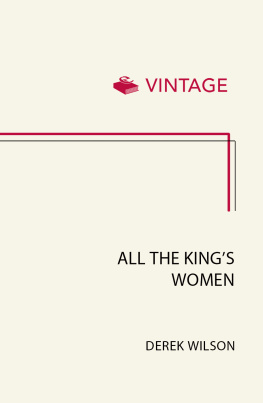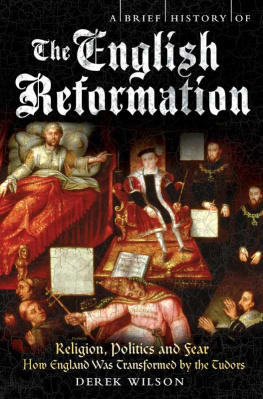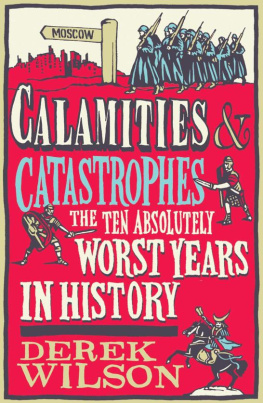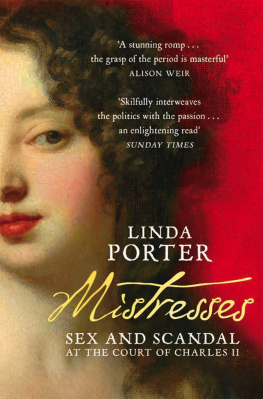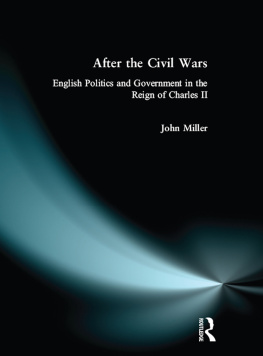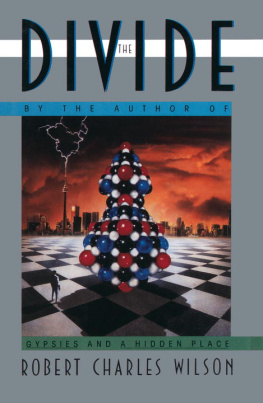CONTENTS
About the Book
The image of Charles II as a randy monarch who dragged the crown through the moral mire and irredeemably weakened its position has persisted throughout the three centuries since John Evelyn gave his judgement. That judgement, Derek Wilson argues, is okay as far as it goes. The Restoration court did set an example of cynical libertinism that provoked opposition not only from outraged preachers, but also satirical journalists and angry mobs who pelted royal mistresses and burned down brothels. But Charles bedroom antics are symptoms and not causes of social decadence. Why did Pepys complain there is nothing almost but bawdry at court from top to bottom or Bishop Burnet observe that throughout the three kingdoms people were throwing off the very professions of virtue and piety? The answers must be sought in the traumatic upheaval of the Civil War and its aftermath in the life of Charles Stuart and his people.
In a society that was shaken loose by violent conflict the position of women changed radically. Many experienced a new freedom and an enhanced power to influence men and events. Charles grew up with and actually enjoyed the company of strong women. Ministers complained of his effeminate conversation. As well as the notorious, grasping mistresses the leech-like Lady Castlemaine, dearest Fubs Keroualle, the outrageous Nell Gwynn Charles was influenced by his domineering mother, Henrietta Maria, his pushy nurse, Christabella Wyndham, his much-loved sisters, Mary and Minette, his only great love, Lucy Walter, his long-suffering wife, Catherine of Braganza and a cavalcade of devoted royalist ladies, actresses, whores, and ambitious gold-diggers who surrounded him throughout his exile and after his restoration. It is this miscellany of relationships that Derek Wilson explores and helps us to understand in All the Kings Women. These relationships helped to form Charles IIs character, shape the course of political events and, ultimately, seal the fate of the dynasty.
About the Author
Derek Wilson, one of our leading biographers and novelists, came to prominence thirty years ago, after graduating from Cambridge, with A Tudor Tapestry: Men, Women and Society in Reformation England. This was followed by several critically acclaimed and bestselling books such as: Rothschild: A Story of Wealth and Power, Sweet Robin: Robert Dudley Earl of Leicester, Hans Holbein: Portrait of an Unknown Man, The King and the Gentleman: Charles Stuart and Oliver Cromwell 15991649 and, most recently, In the Lions Court: Power, Ambition and Sudden Death in the Reign of Henry VIII. He has also written and presented numerous radio and television programmes.
In 2003, he launched the annual Cambridge festival, which provides a forum for readers, authors and media presenters to share their enthusiasm for historical fact and fiction. More details can be found on his website: www.derekwilson.com

This ebook is copyright material and must not be copied, reproduced, transferred, distributed, leased, licensed or publicly performed or used in any way except as specifically permitted in writing by the publishers, as allowed under the terms and conditions under which it was purchased or as strictly permitted by applicable copyright law. Any unauthorized distribution or use of this text may be a direct infringement of the authors and publishers rights and those responsible may be liable in law accordingly.
Version 1.0
Epub ISBN 9781473521599
www.randomhouse.co.uk
Published by Pimlico 2004
2 4 6 8 10 9 7 5 3 1
Copyright Derek Wilson 2003
Derek Wilson has asserted his right under the Copyright, Designs and Patents Act 1988 to be identified as the author of this work
First published in Great Britain by Hutchinson 2003
Pimlico edition 2004
Pimlico
Random House, 20 Vauxhall Bridge Road,
London SW1V 2SA
Random House UK Limited Reg. No 954009
A CIP catalogue record for this book is available from the British Library
ISBN 9780712668026
Go among those women? Not unless I can wear blinkers!
Lady Anne Clifford
LIST OF ILLUSTRATIONS
INTRODUCTION
All it is a tiny word with infinite pretensions, so its use in the present context demands careful definition. First, let me make clear what this book is not: it is not a catalogue raisonn of Charles IIs sexual conquests. Even if it were possible to compile such a list it would have little value. Kiss-and-tell revelations about living celebrities sell tabloid newspapers but distort the images of their subjects and provide few clues to their place in the great scheme of things. When we look back at some of the men and women of past ages who really were important, over-zealous attention to contemporary salacious tittle-tattle similarly distorts our understanding. Of no one is this truer than Charles II, the supposedly libidinous merry monarch. The received myth presents him as a carefree and accomplished seducer who, when he was not doing it, was thinking about it. Novelists, filmmakers and even some biographers have tended to take as their starting point the verdict of the diarist John Evelyn:
An excellent prince, doubtless, had he been less addicted to women his too easy nature resigned him to be managed by crafty men and some abandoned wretches, who corrupted his otherwise sufficient parts
Or of Gilbert Burnet, Bishop of Salisbury:
His love of pleasure and his vast expense with his women, together with the great influence they have had in all his affairs both at home and abroad is the chief load that will lay on him; for not only the women themselves have great power, but his court is full of pimps and bawds, and all matters in which one desires to succeed must be put in their hands.
The picture apparently painted by such high-minded, scandalised observers is vivid and easily recognised: it is the portrait of a debauched king set against the background of a decadent court. It inspired writers of romance and Hollywood costume drama to present tales of lecherous milords in full-bottomed wigs pursuing hapless maidens in low-cut gowns through the teeming streets and gilded salons of Restoration London. Historians and biographers, taking seriously the volume and venom of contemporary criticism, have felt obliged to analyse coolly what manner of man this royal womaniser was weak or wily, manipulator or manipulated, an indolent hedonist who went with the flow or a canny mover and shaker of people and events and the rous cynical smile leers through their careful prose.
What writers have so often failed to take full account of is that such disapproving judgements as those most commonly quoted say as much, if not more, about prevailing male attitudes to women as they do about the kings character. Why should it have been considered reprehensible for a ruler to enjoy female company or even to discuss important matters of state with people he trusted simply because they were not men? Everyone at court was scrambling for influence, wealth and power. Why should that have been accepted (if not approved) behaviour for courtiers but not for courtesans?
The answer is fear. In a male-dominated society women were regarded as a lower order of creation. The pious John Milton racked his brain to try to understand,
why did God,
Creator wise, that peopled highest heaven
With spirits masculine, create at last
This novelty on earth, this fair defect
Of nature
For the proper ordering of society women had to be kept in subjection. But that was easier said than done precisely because this defect was fair. Women were possessed of a sexual magic that made them irresistible to men. Once their spell had been cast, poor, hapless males could be reduced to debilitating servitude. As if that was not bad enough, in post-Restoration society all manner of women were asserting and exercising new kinds of authority.
Next page
